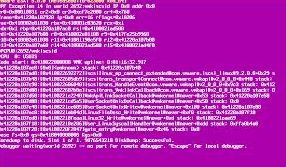

NUMA scalability with no dynamic load balancing: With this profile selected, the profile NUMA Scalability is used, however RSS does not perform load balancing.Ĭonservative Scaling: With this profile selected, RSS uses as few processors as possible to sustain the load. While in NUMA scalability mode, RSS uses the limits that are set for scaling across multiple NUMA nodes. For this profile, RSS assigns at least one RSS CPU per NUMA node before assigning the second RSS CPU for each NUMA node. This is done to enable applications running on multi-NUMA servers to scale well. NUMA scalability: With this profile selected, RSS CPUs are assigned per NUMA node on a round robin basis. No dynamic load balancing: With this profile selected, RSS distributes but does not load balance at runtime. RSS now supports the following predefined profiles:ĭefault: With this profile selected, new RSS features are disabled and it performs very similarly to the way that RSS performs in Windows Server 2008 R2. NICStats functionality through Windows Management Instrumentation (WMI) and Windows PowerShell. RSS configuration information (base RSS CPU, number of queues, and indirection table) RSS diagnostics and management capabilities include:Įvent tracing. In addition, RSS in Windows Server 2012 provides automatic load balancing capabilities for non-TCP traffic (including UDP unicast, multicast, and IP-forwarded traffic), improved RSS diagnostics and management capabilities, improved scalability across Non-Uniform Memory Access (NUMA) nodes, and improved resource utilization and resource partitioning through facilitation of kernel-scheduler and networking stack alignment.

RSS achieves this by spreading the network processing load across many processors and actively load balancing TCP terminated traffic. In Windows Server 2012, RSS has been enhanced, including computers with more than sixty-four processors. The distribution of this processing makes it possible to support higher network traffic loads than would be possible if only a single core were to be used.

RSS enables network adapters to distribute the kernel-mode network processing load across multiple processor cores in multi-core computers. For information about virtual Receive-side Scaling (vRSS), see Virtual Receive-side Scaling in Windows Server 2012 R2.


 0 kommentar(er)
0 kommentar(er)
